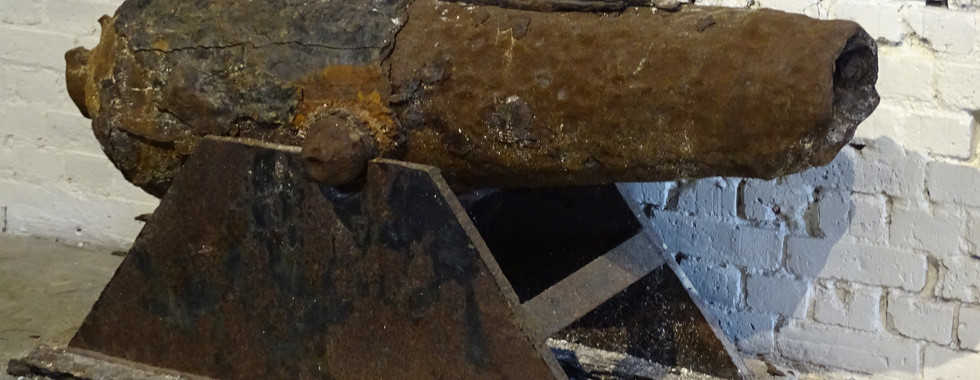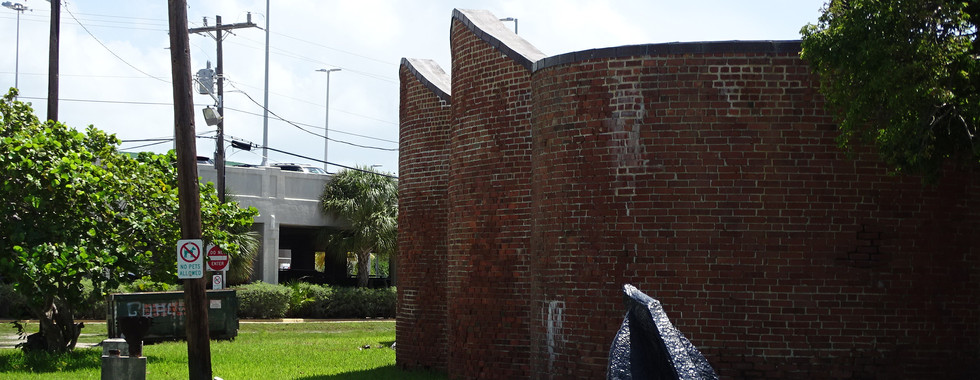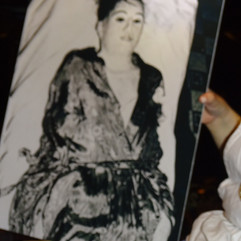A couple of visits to Fort East Martello Museum
- PANICd Paranormal Videos
- Jul 28
- 5 min read
In July of 2016, we took a cruise for our 10th anniversary. At that time we were deep into paranormal research and wanted to extend our vacation and travel down to the Keys in Florida as part of our trip. One of the locations that we visited, twice, was the East Martello Musuem. This is the home to many different artifacts, including Robert the Doll.

As Marianne retells the story, she expresses her desire to visit the Turtle Hospital in Marathon Key and informs Shawn that they should rent a car after returning to Miami from the cruise to drive down to the Keys and see "Robert the Doll." Oh, and on the way, we need to pass through Marathon, so we could stop there too. That was enough to talk Shawn into the trip. During our time in Key West, we went on the ghost tour, which brought us out to the East Martello Museum. We didn't have much time to explore the museum or talk to Robert during the tour, so we returned the next day, which was a great choice. There was hardly anyone at the museum since it was a wonderful day outside and most of the people were on the beaches. Please click on the link above (or below) to find out more about Robert and our visit with him. We'll focus on other museum exhibits since we already covered that in another post.
In our following video, we discuss the history of the museum, and Borris tells the tale of Elena Milagro Hoyos (text below). The museum houses artifacts related to her story, including her original headstone.
About Fort East Martello Museum
The historic Fort East Martello, a Civil War-era military structure, houses the Fort East Martello Museum in Key West, Florida. Construction of the fort began in 1862 by the U.S. Army as part of a broader effort to protect the Union-controlled Key West harbor from Confederate attacks. The Martello style, with its thick, rounded walls for enhanced defense, never saw completion or active combat. Nevertheless, it remained a significant symbol of Union presence in the region during the war and an example of mid-19th-century military architecture.
The military largely abandoned the fort after the Civil War ended, allowing it to fall into disrepair over the decades. It remained largely unused for much of the late 19th and early 20th centuries, serving only occasionally for local military or utility storage purposes. Its thick, weathered brick walls endured the humid tropical climate of the Florida Keys and stood as a silent reminder of a war that had never truly touched Key West’s shores. By the mid-20th century, however, interest in preserving historical landmarks led local civic groups and historians to take a renewed interest in the fort’s potential.
In 1950, the Key West Art & Historical Society officially opened the Fort East Martello Museum within the old fort’s grounds. The organization restored parts of the structure and transformed it into a museum dedicated to local history, culture, and art. Exhibits were added that reflected the diverse history of Key West, including its military past, shipwreck salvage industry, cigar manufacturing heritage, and the influence of Cuban and Bahamian immigrants on the region’s development. The museum’s setting, with its arched halls and aged brick walls, provided a unique backdrop for storytelling and preservation.
One of the museum’s most famous and unusual exhibits is Robert the Doll, a supposedly haunted artifact that has attracted paranormal enthusiasts from around the world. Once belonging to local artist Robert Eugene Otto, the doll is known for its eerie presence and is credited by some with causing unexplained misfortunes and supernatural events. The addition of Robert to the museum helped cement Fort East Martello’s reputation not only as a site of historical importance but also as a hub for ghost stories and supernatural tourism in Key West.
Today, the Fort East Martello Museum continues to serve as a cultural and historical anchor for the Florida Keys. It hosts educational programs, art exhibits, reenactments, and guided tours that explore everything from the Civil War and Cuban influence to Key West folklore and paranormal legends. With its blend of military history, local lore, and eerie attractions, the museum offers visitors a comprehensive and atmospheric experience of the island’s unique and layered past.
About Elena Milagro Hoyos
Elena Milagro Hoyos, often remembered simply as Elena Hoyos, was a young Cuban-American woman who became the tragic center of one of the most macabre and widely publicized love-obsession stories in American history. Born in Key West, Florida, in 1909, she was part of a large and well-known Cuban immigrant family. By all accounts, Elena was considered extraordinarily beautiful, with dark hair and striking features that drew attention wherever she went. In her late teens and early twenties, she began to suffer from tuberculosis, a highly contagious and often fatal disease that had no cure at the time. Her diagnosis set in motion a chain of events that would make her name forever linked with a man named Carl Tanzler.
Elena met Carl Tanzler, a German-born radiologist working under the name Count Carl von Cosel, when she was brought to the U.S. Marine Hospital in Key West in 1930. Tanzler became immediately and deeply infatuated with her, claiming that he had seen her in visions years earlier as his destined love. Despite her serious illness, he lavished attention on her, bringing gifts, perfumes, and homemade remedies, believing he could cure her through unconventional means. Her family was grateful for the help, but there’s no evidence that Elena reciprocated his affections. Tanzler’s obsession deepened as her condition worsened, and he ignored the clear signs that she was nearing death.
Elena died on October 25, 1931, at just 22 years old. Tanzler, who alone retained the key, paid for her family's mausoleum burial in the Key West Cemetery. Unbeknownst to her family, Tanzler continued to visit her tomb for over a year. In 1933, he removed her body and took it to his home, where he attempted to preserve it with wax, silk, wire, and glass eyes. He lived with the corpse for seven years, dressing it, talking to it, and sleeping beside it. In 1940, a tip from Elena’s sister led to the discovery of his actions, which horrified the public and fascinated a nation eager for sensational stories during a difficult era.
Despite being arrested for grave robbing and desecration, Carl Tanzler was never prosecuted due to the statute of limitations expiring. The case elicited a bizarrely divided public response. Some saw him as a delusional and dangerous man who had committed unspeakable acts, while others romanticized his actions as the ultimate, if twisted, gesture of love. Elena’s remains were secretly reburied by the authorities in an unmarked grave to prevent further disturbance, and the incident quickly entered Florida folklore, where it has remained ever since.
Today, Elena Hoyos is remembered not just as a victim of tuberculosis but as a young woman whose memory was manipulated and exploited by a man’s obsessive delusion. While her story is often sensationalized in ghost tours and pop culture, there is a growing effort to shift the narrative back toward understanding her as a real person with a family, a culture, and a voice that was never truly heard. Her legacy serves as a somber reminder of how obsession and control, when twisted by love, can transcend boundaries that one should never cross.

If we ever make it back to Key West, we will definitely make our way back to the East Martello Museum. The museum had some interesting and obscure artifacts, and we would love to capture video footage now that we have a camera small enough to travel with. Please leave a comment below if you have been to the museum yourself. We would love to hear about your adventure.


















































































Comments